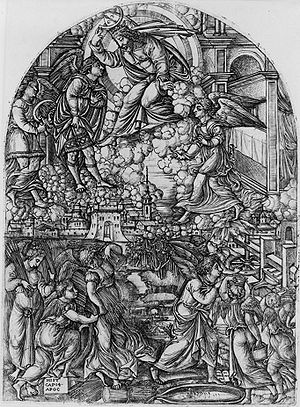Updated to include link to Doherty's own comments: 1:20 pm, 15th May 2011.

Doherty’s chapter five is titled “Apocalyptic Expectations” and that, indeed, is what the chapter is about.
Firstly, I will address an unprofessional falsehood published by McGrath in a comment added to his review. McGrath in his review cited Hebrews, 1 Timothy and 1 John in a context that suggested he was using them as evidence for what Paul himself wrote. A commenter picked him up on this error, and McGrath then accused Doherty of being the one to lump all the epistles together indiscriminately. The point of such an accusation is to lead readers to think that Doherty’s arguments are sloppy.
Yes, I should have explained that Doherty lumps all the epistles together, for the most part, whereas my instinct is to focus on the authentic Pauline letters as our earliest evidence.
McGrath then excused himself from his own error by saying he wrote the post late at night. But that does not excuse him from his accusation that it is Doherty who “for the most part lumps all the epistles together”.
Fact:
Doherty refers to passages of Paul in 1 Thessalonians (p. 51), 1 Corinthians (p. 53, 56), Romans (pp. 55-6) and 2 Corinthians (p. 56) and in each case associates these with Paul’s name.
In 1 Thessalonians 4:15-17 . . . Paul informs his readers . . . A few verses later Paul warns . . . .
At the end of 1 Corinthians, Paul makes an urgent plea . . .
But the revealing passages are those in which Paul expresses his eschatological (End-time) expectations. The first to look at is Romans 8:22-23 . . . . Here Paul’s orientation is squarely on the future. . . . Go on to Romans 13:11-12 . . . .
After quoting 2 Corinthians 6:2 Doherty immediately comments: Paul’s quote is Isaiah 49:8. . . It is one thing for Paul to ignore Jesus’ career . . . .
On page 53 Doherty lists 4 scriptures in a row — Philippians 1:6 and 3:20, 2 Thessalonians 1:7 and 1 Peter 1:7 — and introduces this collection with the explanation that they present passages from “epistle writers from Paul on . . . .”
Doherty is clear throughout his book on clearly distinguishing the different epistles, and sets this out in black and white as early as pages 16-17 of chapter 1. On those pages Doherty spells out which epistles are generally considered authentic to Paul and the various date ranges assigned to each of the NT epistles.
McGrath’s accusation that Doherty “lumps all the epistles together, for the most part”, is clear evidence that he has failed to honestly present Doherty’s arguments.
But what is the chapter about? Continue reading “Doherty’s argument in chapter 5, and correcting falsehoods in a certain “review””
